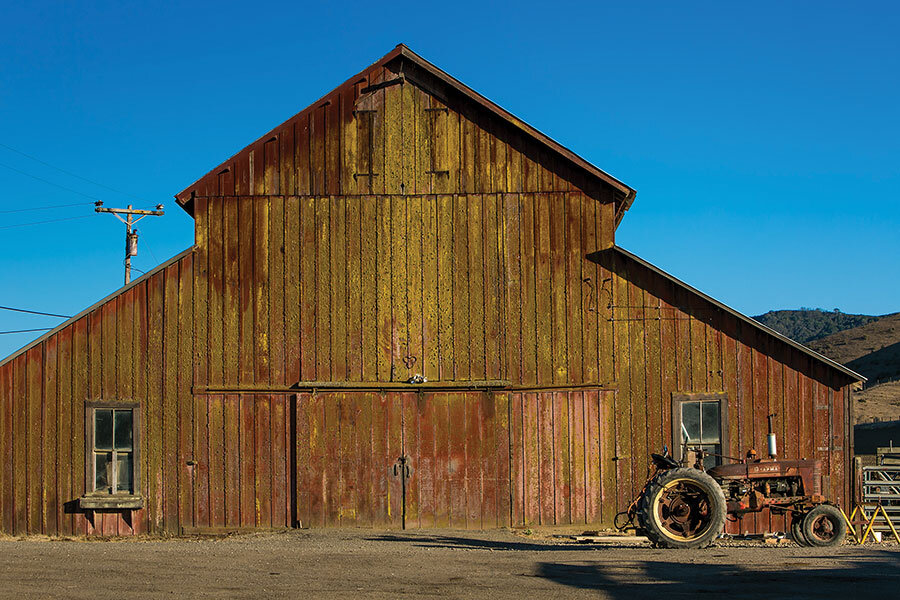Our barn and Beethoven
Loading...
When my husband, John, and I designed our barn, we dreamed that it would house a team of oxen and a couple of goats – but never a chamber orchestra.
On the summer solstice in 1985, a hundred friends gathered to lift the heavy timbers for the barn. By sunset, the 40-by-72-foot framework of beams testified to the strength of a community. We celebrated the barn-raising with a potluck and contra dance.
We never moved our animals into the large barn, but kept them in a smaller shed near our house that was easier to access during winter snowstorms. Instead, we stored our maple-syrup buckets and piles of lumber in it. We parked tractors beneath the cantilevered overhangs.
One summer we hauled a load of hay and stacked it on the upper story, and that fall, our young sons spent hours rearranging the bales to build a replica of the massive chair in which Lincoln’s statue sits at the Lincoln Memorial in Washington.
Over the years, the families who helped raise the barn have returned for our summer solstice parties, featuring plays on our small stage, live music, storytelling, and treasure hunts.
Eventually, our friends’ children matured and held their weddings in our wildflower fields with receptions in the barn. Then, a couple of summers ago, while we were hosting a farm tour for a local organization, a friend asked if the Holland (Mich.) Symphony League might use the barn for a benefit that would include a farm-to-table dinner followed by a short concert.
“Bach instead of reels and jigs.” I looked at John, who most nights plays Irish fiddle tunes on his piano accordion. “What do you think?”
“Sure,” he said. “We’d be glad to help other musicians.”
A week later, we met the ladies of the league who strolled around Pleasant Hill, studied the barn, and exclaimed over a golden field of black-eyed Susans in bloom. Before they drove away, we set a date for the fall benefit. One year later, a newspaper article accompanied by a stunning painting of our barn announced the upcoming Symphonic Table.
After Labor Day, the ladies arrived to scrub the stage, vacuum the concert site, and sweep the lower level, where the chefs would prepare the meal. Trucks hauled in tables, chairs, and dishes. League members unloaded numerous large pots of yellow and maroon chrysanthemums.
At 4 o’clock on the chosen Saturday, the dinner guests arrived, and members of the chamber orchestra carried in their instruments. A junior string quartet played Vivaldi as men in casual slacks and sweaters and women in flowery dresses and sandals sipped punch and sampled appetizers. The chefs announced dinner and carried platters of food to the long tables.
After dessert, John and I slipped off to milk our goats, and as we walked back to the barn, the orchestra began to tune. A thrill rippled through me as the cacophony revived memories of watching Leonard Bernstein’s musical programs for children years ago. Suddenly, I was back at Meadow Brook, waiting for the moment when the dissonance created by the individual instruments would cease, and Detroit Symphony Orchestra members would unite their skills. The opening phrases of the Overture to Mozart’s “Don Giovanni” floated across the pond, accompanied by a flock of geese flying overhead as culture and nature mingled.
For the final selection, the orchestra swept into the first movement from Beethoven’s Symphony No. 1. Orange streaked the western sky, and twilight fell as the music swelled and soared. The garlands of lights hanging from the barn’s rafters shimmered like candles in a castle hall.
When the conductor’s hands rested, only the crickets chirped, until everyone rose and applause vibrated the wooden floorboards.







